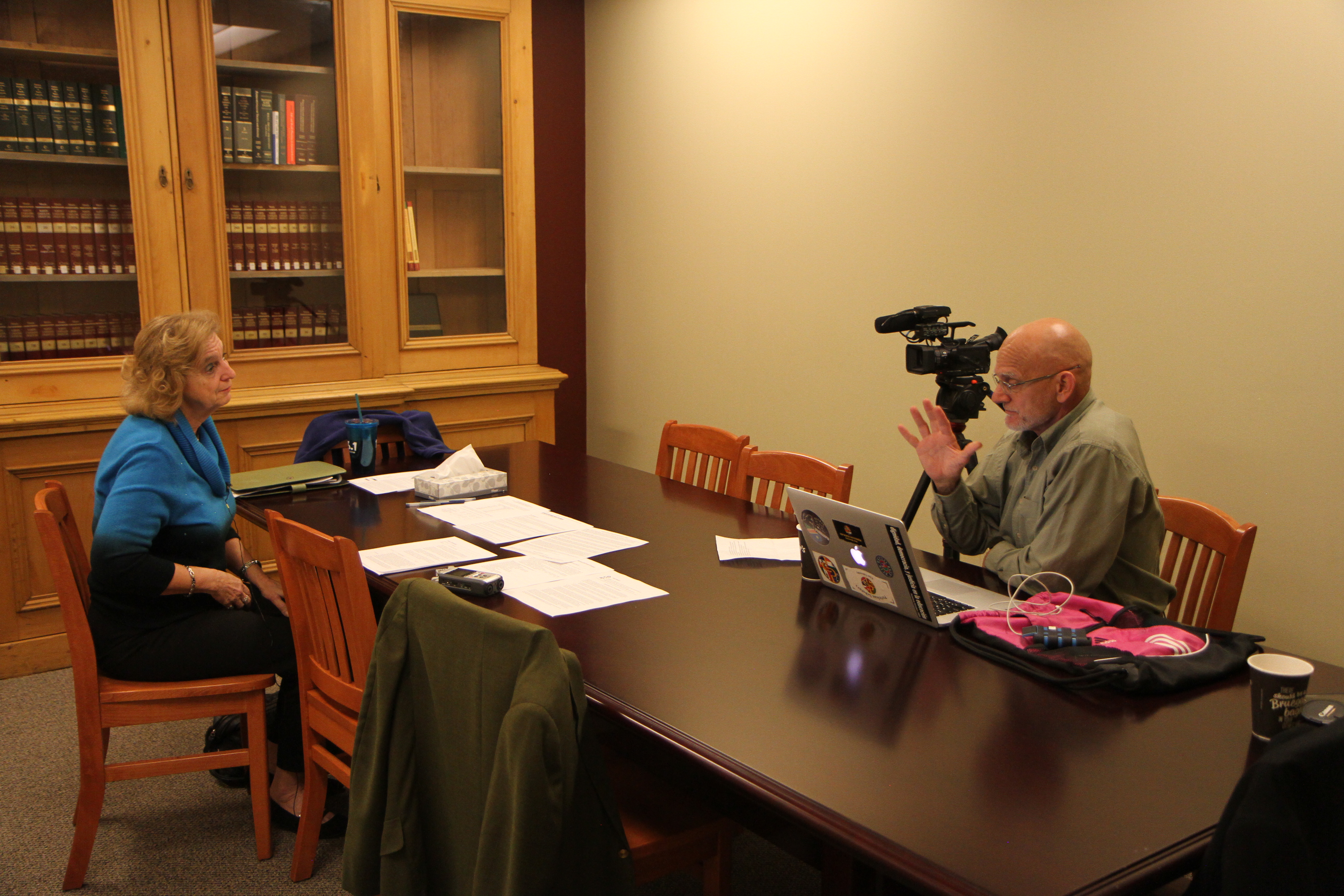Interview with Marlene Myers, North Carolina State Refugee Coordinator
Refugees in North Carolina give back
Amid a global rise in zenophobia, recent news stories from the US indicate increased resistance to accepting migrants and refugees, especially in the Southeast.
Perpetuation of stereotypes and misinformation fuels much of this sentiment. What most people don’t know -some inside but mostly outside the aid sector, especially here in the United States- is that refugees almost immediately give back both internationally and in their local communities. Most become tax paying, fully functional contributors to their new home communities in an astoundingly short number of months, giving back in large measure.
Refugees overcome seemingly endless obstacles to establish a meaningful new life in their host nations and, typically, are amazingly resilient and resourceful people who, arguably, represent the best of humanity.
Listen here for Marlene’s voice describing refugee contributions.
One way they give back is by sending money back to their country of origin. According to various sources total remittances from relocated refugees and immigrants are now well over US$500 billion per year, and is now more than three times larger than total global aid budgets.
This recent article about remittances to Somalia gives some great detail. Marlene pointed out that nearly 100% of refugees begin making remittances back to their home nation, oftentimes at great personal sacrifice.
Local aid workers, indeed.
Now for some background
I am working on documentary film project with my Elon University colleague Dr. Ahmed Fadaam on the topic of how refugees adjust to life in North Carolina.
Last week we met with Marlene Myers who has worked for the last 25 years as the State Refugee Coordinator for North Carolina. She is employed by the Department of Health and Human Services, Division of Social Services and works with the United States Department of State, Bureau of Population, Refugees and Migration. Her job is to oversee the placement of refugees in locations around North Carolina.
In fiscal year 2017 she will help direct the placement of 3,845 refugees through 13 affiliate organizations around the state under the auspices of the Department of State’s Reception and Placement Program. These refugees come from 40 different countries around the globe, nearly all of whom would have had contact with aid workers as part of their journey.

As part of her job Marlene vets and meets regularly with senior staff members for global aid organizations such as World Relief, Church World Services, Episcopal Migration Ministries and others.
Most of these organizations rotate aid workers deployed outside the US back to duty stations all over the US where refugees are being resettled. One example is the World Relief office in High Point, North Carolina.
We talked about many topics, and Dr. Fadaam and I learned a great deal. By my definition Marlene is an aid worker. Her voice needs to be among those to which we listen closely.
History lesson
The US war in Vietnam (referred to as the “American War” by the Vietnamese) had many legacies. Wars are like that, changing history. One positive impact of this war, in my humble opinion, was the establishment in 1980 of the Bureau of Refugee Programs, the name of which changed in 1993 to its current title, the Bureau of Population, Refugees and Migration (PRM), the initial purpose of which was to organize the intake of thousands of Vietnamese, Cambodian and Laosian social casualties of that prolonged conflict.

In the early years the refugees processed by the PRM were from from a small number of nations, primarily in Southeast Asia. Over the next two decades the changes in the nationalities of those processed by the PRM have mirrored global conflicts. In the last five years both the numbers processed and the range of nationalities have increased significantly, and in 2016 there are more than 40 different nationalities represented. In FY 2016 the United Stated welcomed 84,995 refugees to 49 of our states, with the most welcomed by California, Florida, Texas, and New York. In FY 2015 refugees represented only about 10% of all immigrants to the United States. The US takes in more refugees per year than any other nation, though when looked at per capita the US lags far behind most nations. Other nations accepting fewer refugees have programs that support these individuals and families for a long period time where the US allows for minimal support and expects the refugees to be mostly self sufficient in just over three months.
Though there are domestic vetting processes, the United Nations High Commissioner for Refugees (UNHCR) does the all the major vetting (security, health, etc.) and makes country by country allocations and it is the job of the US PRM to place the yearly allocation.
North Carolina, as a state having many military bases that were the training grounds for soldiers who fought in Vietnam, has always had a welcoming tradition perhaps because so many had connections with the people of Vietnam, Laos and Cambodia. North Carolina in fact has the second highest population of Montagnards outside of Vietnam.
Marlene Myers
Marlene is a dedicated civil servant who has devoted her career to assisting refugees from all over the world and often tells people that she “…has the best job in North Carolina.” She is the Past-President and current Vice-President of the national organization of State Refugee Coordinators, and has networked extensively both with her domestic counterparts and with those in other nations. She is open, passionate, tireless and unabashedly devoted to her life of service. The stories she told of specific situations and refugees spoke volumes as to her humanitarian commitment. I feel honored to have met and learned from her.
At the national level, the State Coordinators of Refugee Resettlement (SCORR) meets face to face yearly and has monthly virtual meetings via email and phone conferences, etc. SCORR is broken down into committees working on various issues.
Marlene also frequently meets with her international counterparts, most typically as a host to international teams looking at how North Carolina manages their refugee resettlements.
Challenges
During our interview she outlined many challenges. Here are just a few.
- An increasing number are “urban refugees” who have taken temporary refuge in places like Jordan and Lebanon. Those escaping conflict situations carry psychological burdens.
- In the last ten years there are more people from many more countries. This growth has not been matched by more Congressional funding, meaning far fewer resources for more people.
- Getting translators for the many languages and dialects is difficult, as is dealing with the many cultural and religious differences.
- Single individuals typically get placed together with others so as to ease financial burden. Even when they are from the same country they frequently have language difficulties. Marlene tells of four Sudanese men who were placed together. They told her they could only communicate after they all learned English because they all four had very different dialects.
- Many come from ‘high functioning’ nations like Syria or Iraq where they are likely to have skill sets that can be useful when finding employment and in general when navigating a new life in a foreign nation.
- The down side of coming to the US with high qualifications is that in a majority of cases employment options tend to be limited to very low level positions.
- On the other end of the spectrum are some coming from refugee camps where they have lived, in some cases, for nearly two decades (think Dadaab in Kenya). These refugees face tremendous challenges dealing with the most basic day to day activities.
- Long term follow through is difficult. Long term assessment of the adaptation of refugees is done mostly by academics doing research, though she also meets with the various local ethnic social/religious groups and do ad hoc focus groups and learn what challenges they face.

The humanitarian imperative
One final question I asked Marlene was how she would describe the value of what she does. Why does the United States take in refugees and why does she do her job facilitating this process?
She said she gets that question frequently when she talks with outsiders about what she does. She asks them what they would do if they were in the same situation as these refugees, ‘how would you cope?’ she asks. She basically responds with one articulation of the humanitarian imperative, that we need to respond to others as we would want them to respond to us were we to be in that same plight.
Grounded thoughts from a local aid worker dedicated to serving.
Drop me a message if you have questions or thoughts you’d like to share.



 Follow
Follow